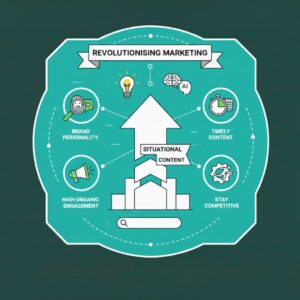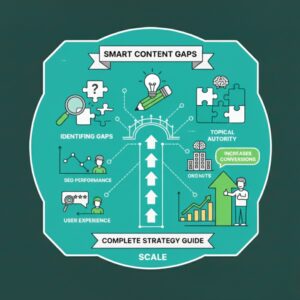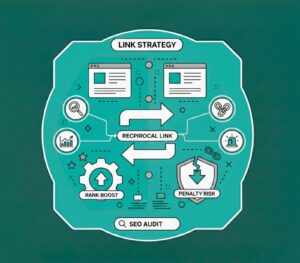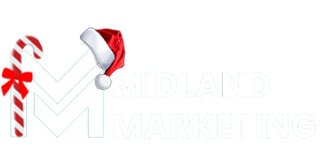Unlocking the Hidden Value in Your Marketing Funnel: A Content-Driven Approach
Blogs | Category
Written By: Lauren Davison
Introduction
Every marketer knows the awareness, consideration, and decision stages in a funnel. But only a few measure the marketing funnel value. In today’s competitive landscape, it is important to understand certain elements. One of them is understanding how each stage drives long-term business growth.
Table of Contents
Understanding the Modern Marketing Funnel
From Awareness to Advocacy – The Complete Journey
A funnel maps how people move from first contact to loyal customer. Each stage has its task. Awareness sparks interest. Consideration builds trust. Decision converts. Advocacy keeps customers coming back.
Touchpoints now are many. People jump between search, social, email, and product pages. They read reviews, watch demos, and join webinars. This matters for customer journey optimisation. It means your content must meet people where they are. Help them learn. Help them compare. Help them decide.
The marketing funnel value today is not a number on a spreadsheet alone. It is the sum of the signals your content sends. It is the trust you build that makes buyers return.
Why Traditional Funnel Metrics Fall Short
Lead counts and click totals tell part of the story. They do not show intent. Or quality. A thousand clicks with no sign-ups is not a win. A hundred well-qualified leads that become customers is.
Traditional metrics miss depth. They miss the value of good content. They can hide weak links in the journey. Measuring only output, such as the number of posts and ads, misses the quality of content. That is why you need to look at content impact. Ask: Which pieces lead to demo requests? Which emails nudge trials? That view ties content to business outcomes.
The Role of Content in Every Funnel Stage
Top of the Funnel: Building Brand Visibility
At the top, people have a problem or a question. They want clear answers. Give them help first.
Examples include blog posts, short educational videos, and social posts. This explains the common issues. These fit a content marketing funnel aimed at discovery.
Metrics: Reach, impressions, engagement rate. But also watch time and new visitors. These show if your content gets attention.
Simple content wins here. Teach one idea per piece. Avoid jargon. Help a reader learn. That builds trust.
Middle of the Funnel: Educating and Nurturing Leads
Now people compare options. They want proof that you solve their problem.
Examples Include Case studies, webinars, downloadable guides, and email series guides. Each of them provides step-by-step guidance. Use content to answer objections. Show how your product works in practice.
Metrics: Time on page, repeat visits, newsletter sign-ups. More than clicks, look at intent signals. Are they returning? Are they asking for demos?
This stage is where lead nurturing through content turns interest into real consideration. Personalise messages. Segment email flows. Make the next step clear.
Bottom of the Funnel: Converting Prospects into Customers
Go Beyond Clicks - Focus on Revenue-Driven Metrics
Clicks are cheap. Revenue is not. To see marketing funnel value, track revenue-linked metrics.
Customer Lifetime Value (CLV) shows how much a customer brings over time. ROI ties spend to return. Cost per Acquisition (CPA) shows efficiency. Combine these with retention rates. That paints a real picture.
If your content brings low CPA and high CLV, it is working. If it drives traffic but has no sales, it needs to change.
Attribution Models That Reveal Funnel Effectiveness
Not all touches are equal. Attribution tells you which assets matter.
Linear models give equal credit. Time decay favours touches near conversion. Data-driven models learn from your data and assign more credit.
Choose a model that suits your business. Use the model to find the content with actual impact. Then double down on the assets that move people down the funnel.
Using Analytics Tools to Track Funnel Performance
Tools help join the dots. Use Google Analytics to watch paths. Use HubSpot or another CRM to tie visits to leads and to customers. Combine ad platform data with your CRM to close gaps.
Integrations let you move from surface metrics to funnel performance metrics. They tell you which blog posts lead to demos. Or which webinar series drives trials? That insight informs content strategy and conversion optimisation.
Optimising Your Funnel Through Content Marketing
Identify Gaps and Drop-Off Points
Start with data. Track where users leave. Are they dropping after the first blog read? Do they abandon forms? Find the weak pages.
Fix the content or the UX. Add clearer CTAs. Offer a next-step resource. For example, link a blog post to a case study or a short demo video. Small fixes reduce drop-off.
Align Content with Audience Intent at Every Stage
Every page must have intent. Map keywords to funnel stages. An “ultimate guide” should target awareness. A “compare features” page should serve as a consideration. A “pricing comparison” targets a decision.
Match tone and depth to the stage. Use simpler language at the top. Use proof and detail near the bottom. This helps conversion optimisation without pressure.
Use Data-Backed Insights to Refine the Funnel Continuously
Run small experiments. A/B test headlines. Try different email cadences. Repurpose a top blog into a webinar and see what shifts. Learn, adjust, repeat.
Refinement is not a one-time project. It is a routine. Keep old content fresh. Reuse high-performing ideas. That keeps your funnel healthy and grows marketing ROI.
Case Study - Turning Content Insights into Conversions
A mid-size B2B SaaS team had traffic but poor sign-ups. They tracked user paths and found many visitors left after reading an overview post. The content did not link to deeper help. The team changed the flow.
They added a short webinar signup beneath key posts. They wrote case studies linked to those posts. They built a simple email welcome that offered a demo in week two.
Results in three months:
- Webinar sign-ups rose 40%.
- Trial sign-ups jumped 25%.
- Trial-to-paid conversions increased 18%.
The team used the data to improve the content marketing funnel and to sharpen messaging. That is customer journey optimisation in action. It turned content into measurable funnel value.
Key Takeaways for Marketers
Quality content fuels every stage of your funnel. The right content reduces friction. It builds trust. It shortens sales cycles. Measure what matters: CLV, ROI, CPA, retention.
Do not chase vanity metrics. Instead, measure how content drives conversions and loyalty. Keep testing. Fix gaps fast. Use tools to follow paths. Use data to write better content.
Content strategy is not a task list. It is a growth engine. When you align content to intent, you create a steady flow of qualified leads. That improves funnel performance and gives your business better returns.

Written by - Lauren Davison
Introducing Lauren – one of our content writers who has a flair for SEO and creative strategy!
With a Master’s Degree in Creative Writing, Lauren has niched down into SEO and content writing.
Outside of work, she loves watching the darts, reading and the pub on the weekend.
Want some more?
Latest Insights & News

Revolutionising Marketing: The Rise of Situational Content Strategies
Situational content strategies involve tailoring content to specific moments, contexts, or audience behaviours. By aligning content with real-time trends, seasonal needs, and user intent, brands can increase relevance, improve engagement, and strengthen SEO performance.

Smart Ways to Identify and Fill Content Gaps Fast: A Complete Strategy Guide
Content gaps refer to missing information, unanswered questions, or underserved topics in your existing content. Identifying these gaps helps you create targeted, high-value pages that improve search visibility, satisfy user intent, and outperform competitors.

Reciprocal Links in SEO: Do They Still Boost Rankings or Risk Penalties?
For the keyword “reciprocal links SEO,” focus on explaining how reciprocal linking works today. Reciprocal links are not harmful by default, but Google can flag excessive or manipulative link exchanges. To stay safe, only exchange links when they are contextually relevant, natural, and valuable to users.




